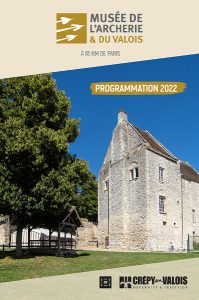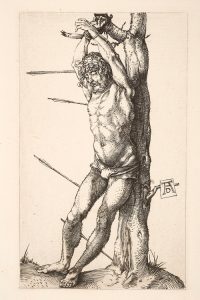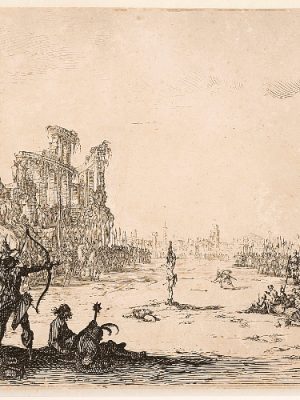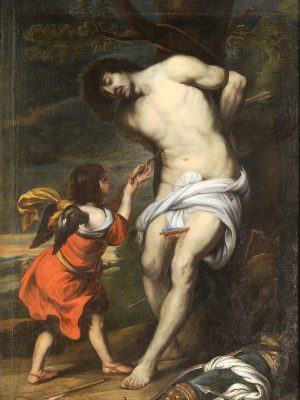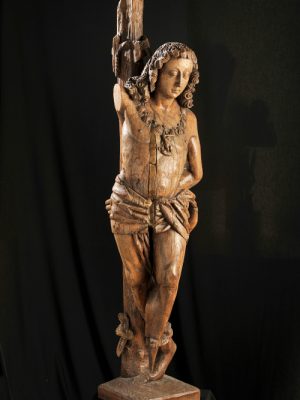Saint Sebastian
Albrecht DÜRER (1471-1528)
Germany, Nüremberg
1501
Etching on laid paper, water-marked
Gift from Mr. Gaston Goumain, 1973
Inv.1973.5.8
______________
Two engravings of St Sebastian by Albrecht Dürer are known, one of a St Sebastian at the column (1498) and this one, rarer, of St Sebastian against a tree. Dated 1501, it is made during the time he is in Nuremberg, between two trips to Italy. One can see the very close and hatched lines that are characteristic of his work. This technique, which gives great liveliness to the drawing, is still very much present after his second trip, until getting an impression of chiaroscuro.
This St Sebastian is shown traditionally, attached to a tree, his body pierced with arrows. The muscles of the torso and legs are rendered with a rich tonality due to the numerous cuttings and hatches. These allow for the distribution of shadows and light in order to give the impression of relief and modelling.
Dürer monogram, which is his usual way of signing, is placed on one of the tree branches.
Albrecht Dürer (1471-1528) was a pluridisciplinary artist, painter, draughtsman, mathematician, mostly known for his engravings. About three hundred are attributed to him today (two hundred on wood and one hundred on copper), to which more than seventy paintings, a thousand drawings and three printed books can be added.
After a goldsmith apprenticeship with his father which enabled him to learn how to use the chisel, he continued his education with a painter who was also a wood engraver. Once his initial training over, he traveled to Colmar, Basel and Strasbourg and ended up coming back to Nuremberg where he got married. Immediately after his honeymoon, he left for his first trip to Italy, where he will go back in 1505. These trips noticeably influence his style. Indeed, having left to study classical art, he became an artist at the crossroads between Northern and Southern artistic schools, bringing together German influences and those from his foreign trips. He initially represented nature and landscapes and then perfected himself in geometry, perspective, optical effects, symbols and science, which he excelled in.
Even though he knew perfectly how to engrave on wood, he never did it himself: he gave very precise drawings to engravers, which explains the tangible disparities in his creations.



